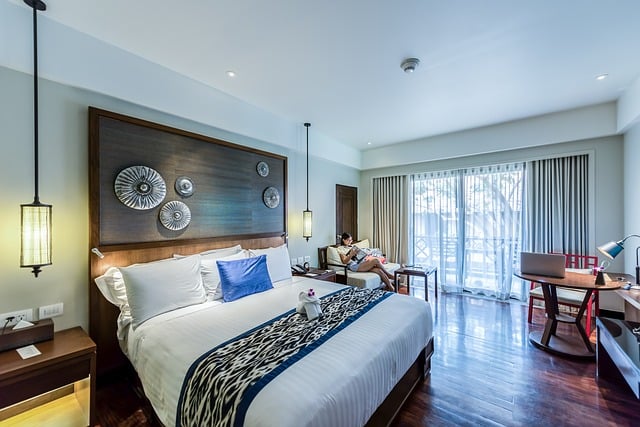Well Lit Bedroom
Well Lit Bedroom
4 Secrets to a Well-lit Room
There are a lot of factors that go into creating a well-lit room, but if you're not well-versed in lighting, creating an attractive and functional space can be a little mystifying. If you can tell that something is missing but can't quite put your finger on it, we can shine some light on the secrets that can help you make every room in your home well-lit:
- The function of the room
- Lighting zones
- Light sources
- Dimmable lights
Let's get started.
1. Room Function
How you intend to use a room is one of the most important things to consider when developing a lighting plan. The way you spend your time in a room and what you are trying to accomplish in terms of ambience dictates the type of lighting you will need.
In order to determine what your current lighting scheme is lacking, figure out how your lighting could better serve you and start making plans from there. Here are some tips to get you started:
- In the bedroom, make sure to avoid bright lights around the bed where you'll want to relax and limit your exposure to blue light in order to get a good night's sleep. A light bulb with a low colour temperature, such as an extra warm white bulb, is ideal.
- Consider using a brighter bulb in your wardrobe area that makes it easier to see clothing colours more accurately and help wake you up in the morning while you get ready for the day.
- In the dining room, choose overhead features that utilize a dimmer so you can adjust the level of brightness and set the mood. Take care that any track lighting doesn't shine in the eyes of those seated around the table.
- In kitchens, a mixture of ambient and task lighting works best. Keep task lighting low where it will benefit you the most, such as under cabinets. Learn everything you need to know about under cabinet lighting.
- Dimmable lighting is usually the best option for bathrooms because it provides you with extra control, allowing you to cast soft, flattering light for relaxing in the bath or a bright light for applying makeup, shaving, and other self-care routines.
PRO TIP: To brighten and open up a room, use fixtures that illuminate the walls rather than the floor.
Deciding on room function helps you with the next secret:
2. Zones
 The easiest way to properly light a room is to break it down into zones, each with its own light sources and controls. By creating areas that have lights on different dimmers and switches, you gain several benefits:
The easiest way to properly light a room is to break it down into zones, each with its own light sources and controls. By creating areas that have lights on different dimmers and switches, you gain several benefits:
- You have more control over the ambience of the room and can adjust it to suit your purpose.
- Zones create pockets of area-specific light, allowing multiple people in one room to enjoy different tasks without affecting the others.
- It saves energy and money by limiting the lit area to the space you are working or relaxing in.
To create zones, determine what you use each part of the room for and light it accordingly. For instance, is there a corner of the room where you like to tinker or make crafts? Identify these spots and illuminate them with task lighting that will make it easier to see what you're doing.
Learn more about ambient, task, and accent lighting.
3. Light Source
Light sources can make or break a space. Now that you have established the room function and lighting zones, it's time to sort out which fixtures and bulbs best suit your purposes. You'll want to choose fixtures and light bulbs that will enhance the ambience and create a functional, multipurpose room.
Combining different fixture styles like floor, table and ceiling lamps, and building them into your decor is a great way to create a seamless lighting scheme that looks good without limiting it to a single-use space. Tailor your selection to room and zone function – anything that causes eye-strain or fatigue should be avoided.
If you're looking for something warm and welcoming in order to create a relaxing space, try lights with a lower colour temperature:
If you're searching for something for your work space, try blue-light-heavy bulbs for task lighting to help keep you alert:
PRO TIP: Picking the right lamp shade can be just as important as selecting the right light bulb. Lamp shades diffuse light, which affects how your light will appear. Bring your chosen light bulb with you when picking out lamp shades and test it out to see how it looks.
4. Dimmers
Every room should have a dimmer, especially those that are used for a variety of tasks. A dimmer makes it easy to adjust your lighting to your needs without changing or adding light sources, providing you with extra flexibility and control. With a dimmer, you can also adjust your lighting throughout the day – try using a bright white light in the morning to help wake you up and switch to a low, calming light to ease you into sleep in the evening.
Dimmer Switches
PRO TIP: Dimmers also help you cut down on electrical costs and increase the lifespan of your light bulbs. Learn more about average rated lifetime hours and how to extend the life of your bulbs.
All Lit Up
Changing your lighting is a simple and relatively inexpensive way to improve the appearance of your home, especially if you already have the infrastructure in place. Now that you know what it takes to light a room well, you can easily improve the ambience of any space.
Source: https://www.thelightbulb.co.uk/resources/4-secrets-well-lit-room/



Tidak ada komentar:
Tulis komentar